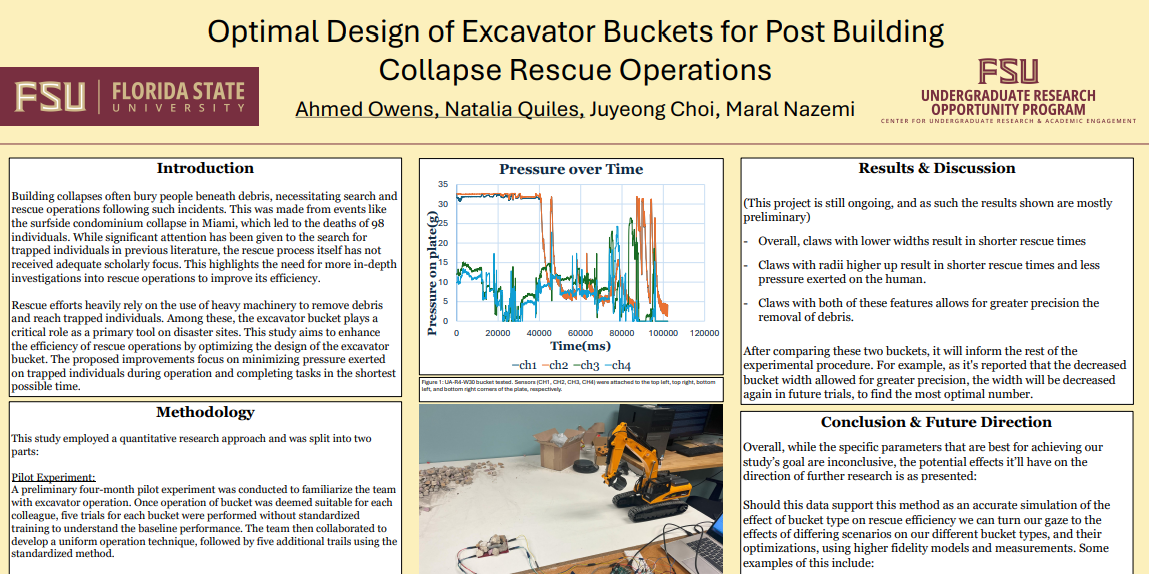Research Symposium
25th annual Undergraduate Research Symposium, April 1, 2025
Ahmed Owens Poster Session 3: 1:45 pm - 2:45 pm/ Poster #13

BIO
I'm from Tallahassee, Florida, and have always been interested in the ways technology can be used to save people. From prosthetic hearts, to better surgery, to faster ambulances, to saving lives with the money, finding ways to leverage technology towards protecting people's lives has been my passion.
Optimal Design of Excavator Buckets for Post Building Collapse Rescue Operations
Authors: Ahmed Owens, Juyeong ChoiStudent Major: Biomedical Engineering
Mentor: Juyeong Choi
Mentor's Department: Civil Engineering Mentor's College: Engineering Co-Presenters: Natalia Quiles
Abstract
This project aims to optimize the design of excavator buckets to maximize survival rates of trapped individuals under debris following disasters. The experiment was conducted in two parts. In the pilot experiment, I conducted a series of operations with a small-scale remote control excavator bucket focusing on precise removal of individual debris. To minimize variability, I collaborated with three colleagues to develop a standardized technique for bucket operation. Each colleague conducted five trials per bucket design using this uniform method. Design one featured a lower arch, width of 80 CM, and radius of 35 CM (LA-W80-R35) while design two had an upper arch, width of 30 CM, radius 4 CM (UA-W30-R4). These parameters were selected based on my mentor’s research and previous student experiments. Debris piles were randomized during each trial, and sensors were calibrated before each trial. Speed, measured as total debris removal time, and pressure, recorded by sensors placed under the debris, were key metrics for evaluating efficiency. Results indicated design two was more effective in reducing pressure on trapped individuals and minimizing debris removal time. The lower arch design facilitated easier debris pickup due to its steep slope and full closure ability, whereas the upper arch design was less effective in fully enclosing debris. Material differences between the 3D-printed prototypes and the steel buckets used in initial trials were noted as a potential factor influencing performance. Results from this phase will further validate the pilot experiment’s findings, providing insight into scaling the design for real-world applications.
Keywords: Rescue, Excavator


